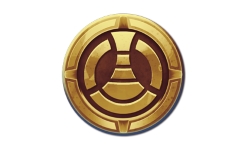Trade Spine League
From TheHolo.Net Forums Wiki
| ||||||||||||||||||||||||||||||||
Contents |
The Trade Spine League is currently an officially sanctioned spacer's union based in the Greater Javin, which serves as a civilian militia and security force for the Greater Javin Corporate Authority.
History
During the reign of Emperor Palpatine, a number of contingency measures - called Operation: Cinder - were put in place, to be activated in the event that the Emperor or the Empire fell. While the aftermath of the Battle of Endor - and the loss of much of the Empire's leadership - prevented many of these contingencies from being activated, a few still took place, including the Iron Blockade of the Anoat Sector. During this period of martial law, the Trade Spine League operated as an informal alliance between spacers, smugglers, privateers, and mercenaries, providing information and access to resources, as well as encouraging cooperation between spacers and traders for mutual gain. Though an uprising in the Anoat Sector never gained any significant momentum, at the time the League was suspected of in some way supporting rebel activity in the region.
By 10 ABY, however, the Trade Spine League had largely faded into obscurity. People remembered the organization, and its rumoured role in resisting the Iron Blockade; but the Blockade had long since ended, and the Sector's spacers and smugglers were back to thinking only about their own interests.
Following the formation of the Greater Javin Corporate Authority, the Sector Governor Ceto Rübezahl found himself in need of a way to address the rampant piracy and smuggling in the Greater Javin. In light of the Iron Blockade and other Imperial atrocities in the region, he realised that an increase in conventional military presence would likely cause unrest among the populace. Instead, he turned to history, and approached the remnants of the Trade Spine League as his alternative. They would work together as before, providing a network of privateers and spacers to monitor and patrol the Greater Javin, and in return the Corporate Authority would provide them with financial support, ships, equipment, and more, and would encourage the Greater Javin's various corporate investors to do the same.
The plan was controversial at first, particularly when Rübezahl appointed Aiden Tahmores - a former Imperial Guard - to serve as the League's de facto leader. However, Tahmores proved to be a wise choice: unfamiliar enough with the upper echelons of the Imperial military to feel beholden to existing protocols and strategies, but formidable enough in his own right to command the respect of those he worked with. Tahmores looked not only at the Empire and at existing and historic militias for reference on how to organize the League, but also at the early days of the Rebel Alliance, where the rebellion had proven to be a significant thorn in the side of the Empire despite minimal resources. Tahmores' proposals were met with scepticism by many, but the results ultimately spoke for themselves.
Invasion
In 12 ABY, the planet Terminus - a few Sectors away from the Greater Javin - was attacked by the Ssi-Ruuk, marking the beginning of an invasion into Imperial territory. Though thoroughly established, the Trade Spine League was ill-equipped to fight a conventional war scenario, forcing the League and the Corporate Authority to accept the reinforcement of the Imperial Sector Fleet.
Hierarchy
Much like the early days of the Alliance to Restore the Republic, the Trade Spine League deliberately established as simple and flat a hierarchy as possible, to encourage a perception of equality and equivalence between its members. This largely expressed itself through three separate grades of League credentials. These credentials came with a (modest) salary, with most money distributed to League ships and operatives in return for services rendered - credits for sensor telemetry, patrol reports, rescue activity, combat action, and so on. Usually credentials were only issued to the leader of a crew, with said individual expected to compensate their crew accordingly from their profits.
- Commander Credentials were issued to those with significant authority, such as over a starship or battle group. Commanders were usually privateers or mercenaries employed directly by the Trade Spine League for the purpose of military action. Some Commanders might operate a ship that was privately owned, while others were employed by corporate "sponsors" to crew and operate a starship that the company had donated to the League. In an active situation, a Commander was expected to take charge of the assembled League forces, and those with lower credentials were expected to follow their lead.
League Commanders: Aiden Tahmores
- Captain Credentials were issued to all Captains who registered with and paid the appropriate dues to the Trade Spine League. In exchange for a modest fee, Captains gained access to the League's comm network, and could expect preferential treatment at starports, repair facilities, and certain other corporate locales. In exchange, Captains were expected to "help out" when they were able, responding to distress calls, and contributing to the League's monitoring of the region - with each contribution earning a proportionate payout from the League. Most Captains flew freighters and transports, though some were privateers or mercenaries operating under the oversight of a Commander.
League Captains: Vittore Montegue, Elira Asael
- Lieutenant Credentials were reserved for operatives subordinate to a Captain or Commander, but who required a certain degree of authority in order to perform their duties. Some Lieutenants were first mates on larger starships, while others were leaders of hyperspace-capable starfighter squadrons, deployed as response units. Some Lieutenants meanwhile held administrative positions, regarded as roughly equivalent to a Lieutenant from local law enforcement. For the most part, Lieutenant Credentials were used to grant someone the status of being on the League payroll, but without necessarily needing the authority that higher credentials provided.
League Lieutenants: Vhiran Antilles
|
|
|






